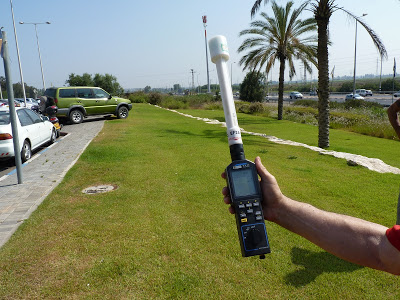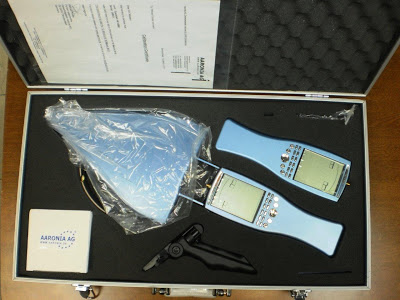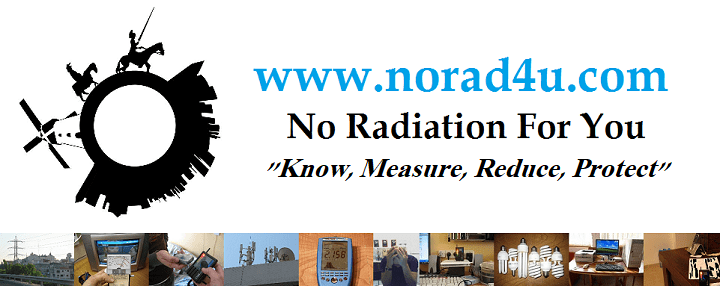What is a Professional EMF tester? what he can do, how he can help, what can’t he do & what are the possible problems that these services can suffer from

A Professional EMF tester
A professional test will fit if you can’t do the measurement yourself, or if you need the formal report. Before ordering this service please take into consideration the downsides and problems of the service mainly do the tester acknowledge the risk from EMF, the test protocol he uses, the standards and regulation he works by, and the way he uses his meter.
These downsides and problems are many and influence the outcome of the test in such a big way that in most times you will get a cleared and more informative picture by doing the test your self and by using a much cheaper, less accurate home use EMF meter.
If you chose to get the help of a professional tester, I suggest you make sure that the tester is not obligated to work according to the very high ICNIRP so-called safety standards and measurement protocols. These will cause their meter to behave very slow sampling rate (very bad for RF) and for the outcomes of the test to be “all OK” with “very low” levels, and misleading if you already hold the opinion that EMF exposure is not healthy and/or suffering from EHS. Check with the tester, before ordering his service that he is using fast EMF meters (high sampling rate, higher than 1000 per second), show and record peak levels, and give an informative report with level down to 0.00001 uW/m2
Professional EMF Tester (Safety Survey) – In short!
| 1. A One-time measurement, in a world of changing EMF levels. 2. Usually measurement of outside EMF sources and not in-house sources. 3. Usually, very accurate EMF meters are used (but slow sampling rate). 4. Usually very slow (low sampling rate) meters are used (2/sec) which will not be able to detect modern low Duty Cycle signals like WIFI, BLUETOOTH, UMTS, CDMA, DECT, Pulse Radars, and sometimes even cell phone towers). 5. In some cases, the testers are using RF meters which can’t measure or will not report levels below 0.1uW/cm^2, while levels below this limit can still cause EHS symptoms. 6. In some countries, the test protocols are not satisfactory and are base on the ICNIRP guidelines. 7. According to the ICNIRP guidelines, the levels should be averaged over 6 minutes. So the tester will report only low levels. 8. ICNIRP safety standards which are based only on heat effect are very high. If the tester will follow them, even high levels of 10uW/cm2 (100mW/m2) will be considered “safe”. 9. Some of the professional testers don’t acknowledge the health effects and risk caused by exposure to EMF radiation. 10 . You get an official report (you supposed to) Summary – A professional test will fit if you can’t do the measurement yourself, or if you need the formal report. Before ordering this service please take into consideration the downsides and problems of the service mainly do the tester acknowledge the risk from EMF, the test protocol he uses, the standards and regulation he works by, and the way he uses his meter. These downsides and problems are many and influence the outcome of the test in such a big way that in most times you will get a cleared and more informative picture by doing the test your self and by using a much cheaper, less accurate home use EMF meter. |
Ordering a professional Tester
Ordering a professional EMF/EMR tester to do the EMF testing is an easy way to measure the Electromagnetic Radiation (EMR) in your house or workplace. But it usually costs a lot of money and the tester measures the EMR only for a short period of time, during the day he, or she, pay you a visit. However, usually the quality and accuracy of his or her equipment are usually very high (but slow) and the official report is valid in courts and for the official authorities as evidence.
In some countries, professional testers are subjective to laws and regulations that can sometimes conflict with your need for real information of value. For example, in Israel (where we are from), the testers are obligated to tell you the level of Radio Frequency (RF) EMF/EMR with a comparison to the Israeli standard (ICNIRP), which I believe is very high. In Israel, the RF standard for RF environmental radiation is 10% of ICNIRP, which I believe is very high, but in the reports, they use the even higher ICNIRP standard as a reference to all measurements. In Canada, the US and other countries the safety standard is 100% of the ICNIRP or the FCC, which again are very very high. Comparing the levels measured to the high standards may calm the customer down in some cases, but it can also blind him to a real problem of EMF/EMR that exists where he lives.
In some cases, the professional tester will know less than you do, about EMF/EMR health risks and effects and about EHS. In some even more drastic cases, the so-called professional tester will know less than you, about measuring EMF/EMR.
When you do choose a professional tester it is very important to choose the right one. A good tester will do the measurement in the right way, will find and document all the EMF/EMR sources in your house and outside it, will give you some advice about what to do in order to decrease the EMF/EMR levels in your house; even if it is very low in reference to the high EMF/EMR Levels standard (long obsolete regarding long exposures) and will submit a valid and truthful report with all the levels, even if he considers them to be very low.
Questions to ask the professional tester
You can ask the following question (most relevant for RF tests) before (or during) the safety survey in order to understand the background of the professional tester, how the test is done, what are the equipment characteristics and other details that will allow you to better understand the test, it’s outcomes and it’s quality.
- What is Safety Survey meter model (should be noted in the report)?
- Sensor model (should be noted in the report)?
- Where and how the meters where calibrated (please see the calibration section above)?
- How many times in a second the meter measures the RF radiation (a slow meter will be reliable only if and when FM/AM, analog TV broadcast and measurement of constant RF radiation). A slow meter can measure the RF level once in a second. A fast meter will be able to measure thousands of times in a single second. Therefore a slow meter will measure only part of the RF radiation which most of it today is made out of many short peaks in the RF, to short for a slow meter to pick up.
- How many times in a second does the meter show the outcomes?
- What does the value that the meter display represent? is it a Max peak value, an Average over couple of seconds or minutes, Average since power-up, Average over a room or area (for example, if the meter measure 10 times in a second and update the display every 0.5 a second it is important to understand how is the displayed value calculated, it can be the max peak measured in the past half-second or the average over the past half second)?
- What does the value that is written in the report represents? Max over time, Average value over time, Average over an area, Max over the area?
- What is the frequency resonance of the meter?
- Is it a single axis or a Tri axis meter?
- What is the lowest level that the meter can show(better be as low as possible, lower than 0.001uW/cm2)?
- How many locations and points are going to be measured?
- Does the report go to show all measurement points in every room, one point or a calculated value?
- How does the professional tester grasp the risk from ELF magnetic field? Does he think there is a risk from low levels(1-10 mG), a risk from high levels(100-2000mG) or no risk at all?
- How does the professional tester grasp the risk from Radiation? Does he think there is a risk from low levels(lower than 0.1uW/cm2), a risk from high levels(10-1000uW/cm2), or no risk at all?
- What is the educational background of the tester?
- Did the professional tester worked, or is working for a cell phone, wireless, or electric distributors or manufacturers?
Summary
As you can see now, it is not enough to order a professional test. You must also understand what the numbers say, how the test was done, when, and what are the views of the tester that could influence the tests and outcomes.
When you get the report you need to analyze it and understand it.
A professional tester will be a wise decision if you can’t do the measurement yourself, or if you need the formal report. Before ordering this service please take into consideration the downsides and problems of the service.
Pay special attention to if the tester acknowledges of the risk from EMF (RF and ELF), understand what is the test protocol he uses, the standards and regulation he works by, and the way he operates his meters.
These downsides and problems are many and influence the outcome of the test in such a big way that in most times you will get a cleared and more informative picture by doing the test your self and by using a much cheaper, less accurate home use EMF meter.

